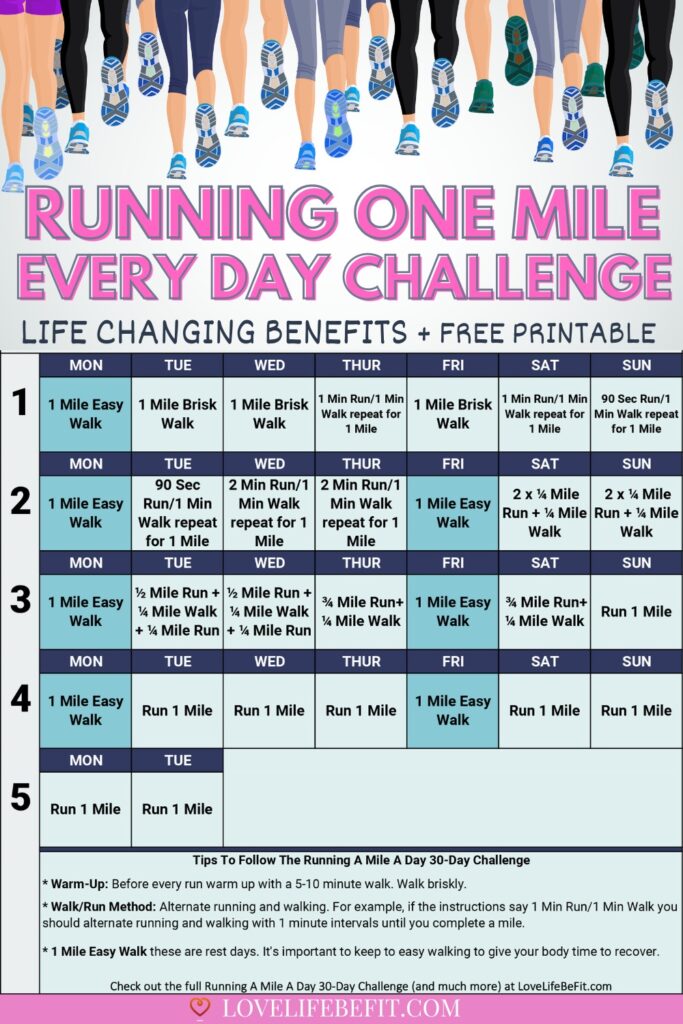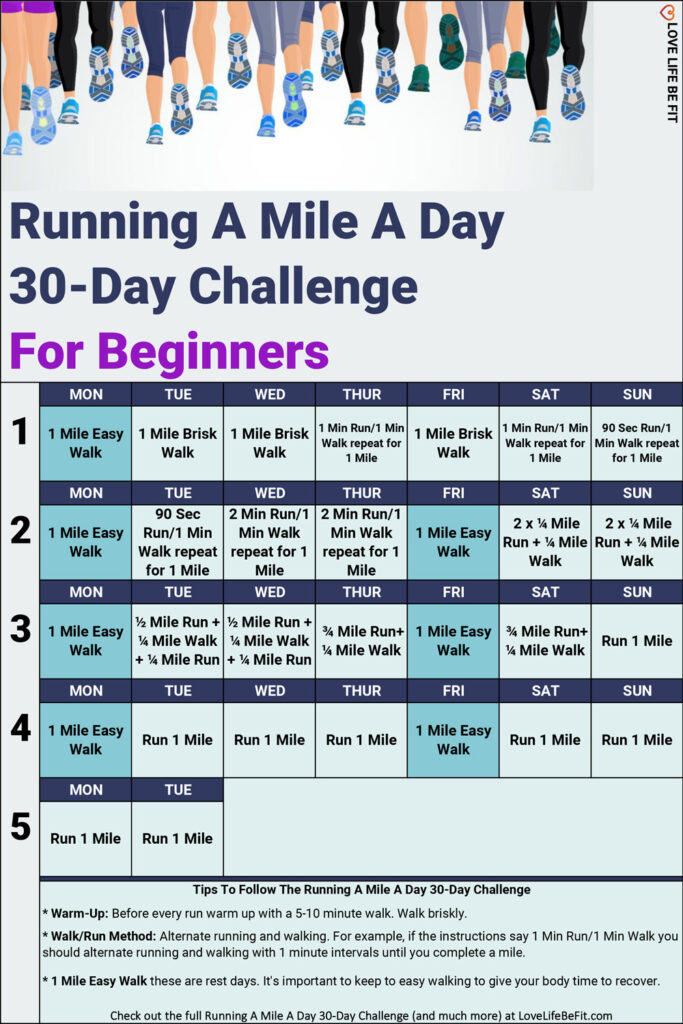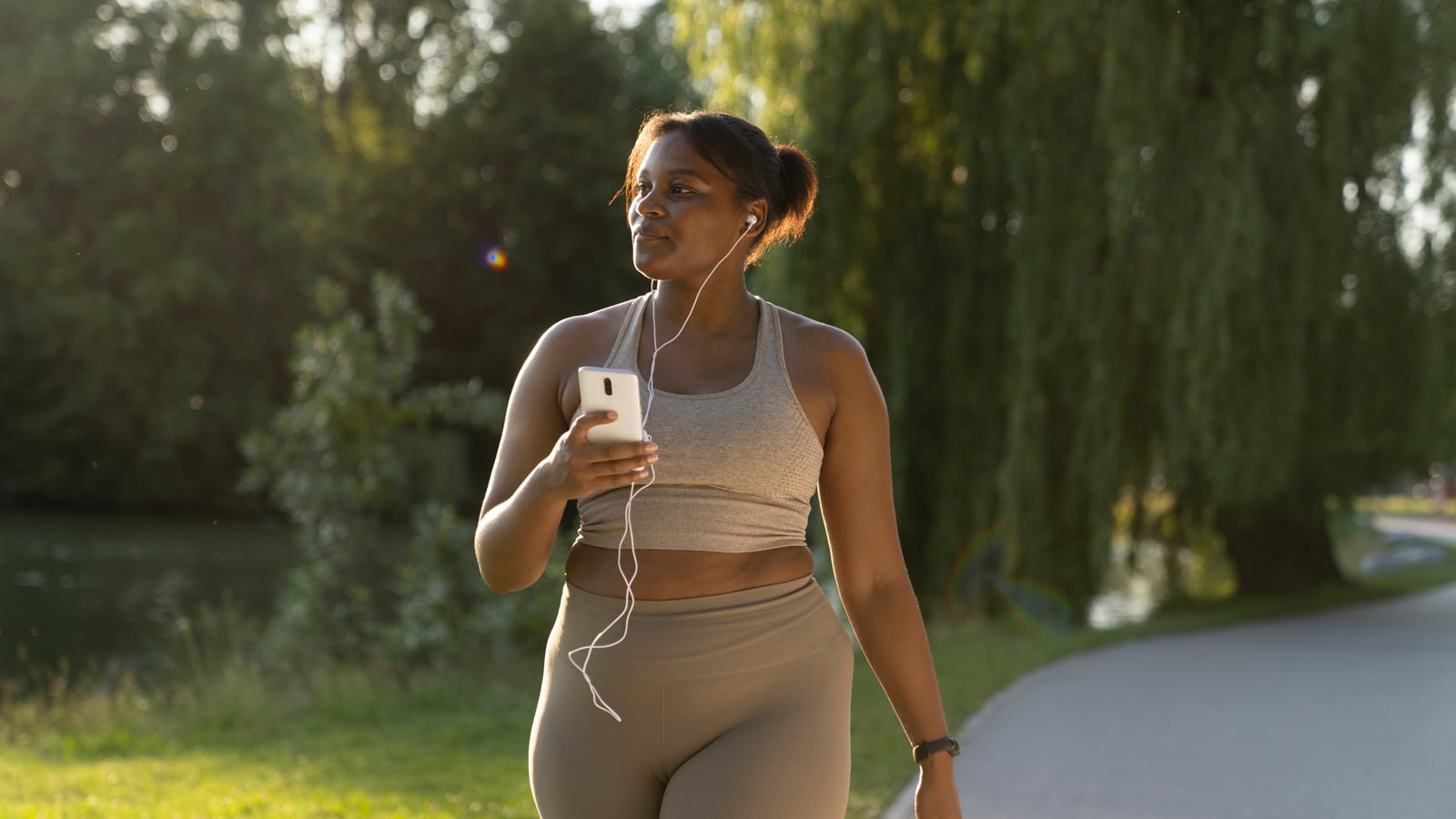Running A Mile A Day: Benefits, Results + 30 Day Challenge
Running a mile a day is a great way to give your fitness routine a boost. It comes with so many health benefits from good cardio to helping with your mental health. With the right eating plan, a daily mile can even help you lose weight.
But how do you go about starting a 30-day challenge of running a mile a day? It depends on your current fitness level. If you already have a regular running routine you can jump right in and run a mile a day without any build-up.
If you’re new to exercise, haven’t exercised for a long time or you’re trying to return to pre-injury fitness levels, running just one mile a day is an excellent challenge. But you do need to build up to this level gradually.
How do you do it? With the Love Life Be Fit Running A Mile A Day 30 Day Challenge! The challenge will help you build a daily running routine and it’s suitable for complete beginners.
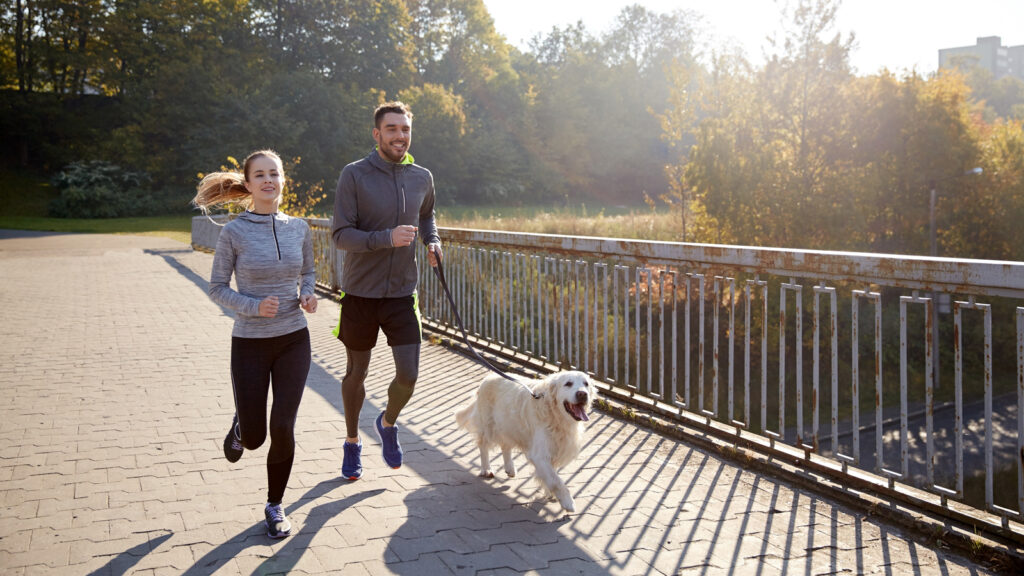
What Is The Love Life Be Fit Running A Mile A Day 30 Day Challenge?
The Love Life Be Fit Running A Mile A Day Challenge is a training plan for new runners to progress from walking a mile a day to running a mile a day.
This running challenge of just one mile a day takes only 20 to 30 minutes making it easy to fit into a busy schedule. Find out more about how long does it take to run a mile.
Who Is The Challenge For?
The challenge is for complete beginners. It’s for all the people who think they can’t run. Anyone who thinks just a mile is a long way.
All you need is a little self-belief. At the end of this challenge, you’ll be on your running journey and can call yourself a runner!
NOTE: If you’re new to exercise, haven’t exercised for a long time, have an existing medical condition or you’re seriously overweight, it’s best to check in with your doctor before starting an exercise program.
The Love Life Be Fit Running A Mile A Day 30 Day Challenge.
Download your FREE printable Running A Mile A Day Challenge.
The challenge starts with a one-mile easy walk where you’re just walking at your natural pace. On days 2 and 3, the pace increases to a brisk walk.
A brisk walking pace is when you walk at a pace that’s slightly faster than your typical walking pace. The pace should be enough to raise your heart rate but not so fast that it causes you to feel out of breath or exhausted. You’re making an effort but you can still walk and talk!
Why does the challenge start with walking?
If it’s a long time since you last exercised, walking a mile a day for the first few days will reduce the shock of launching into your first run. We’re easing you into running to reduce injury risk.
Run/Walk method
Day 4 is the first running session and uses the run/walk method. 1 minute of running is alternated with 1 minute of walking until you complete a mile distance.
The run/walk method helps you catch your breath between running intervals and reduces the stress on your muscles and joints.
Running is a high impact activity and can be hard on the body. We want to make it easier for you to keep running, so the challenge starts slowly with short run/walk intervals.
As the days progress, the running intervals get longer until at the end of week 3 you run your first mile without stopping.
Easy walk days
The running challenge includes easy walk days for rest and recovery. You may feel you don’t need them, but these easy walking days will give your joints and muscles a chance to recover.
Many beginner runners hit a low point halfway through the running challenge when they try to run every day. The easy walk days give you time to recover so your running steadily improves throughout the challenge.
Running streak
At the end of the challenge, there’s a 4-day running streak of a mile a day. If you’re feeling good keep it going. You’re now a runner!
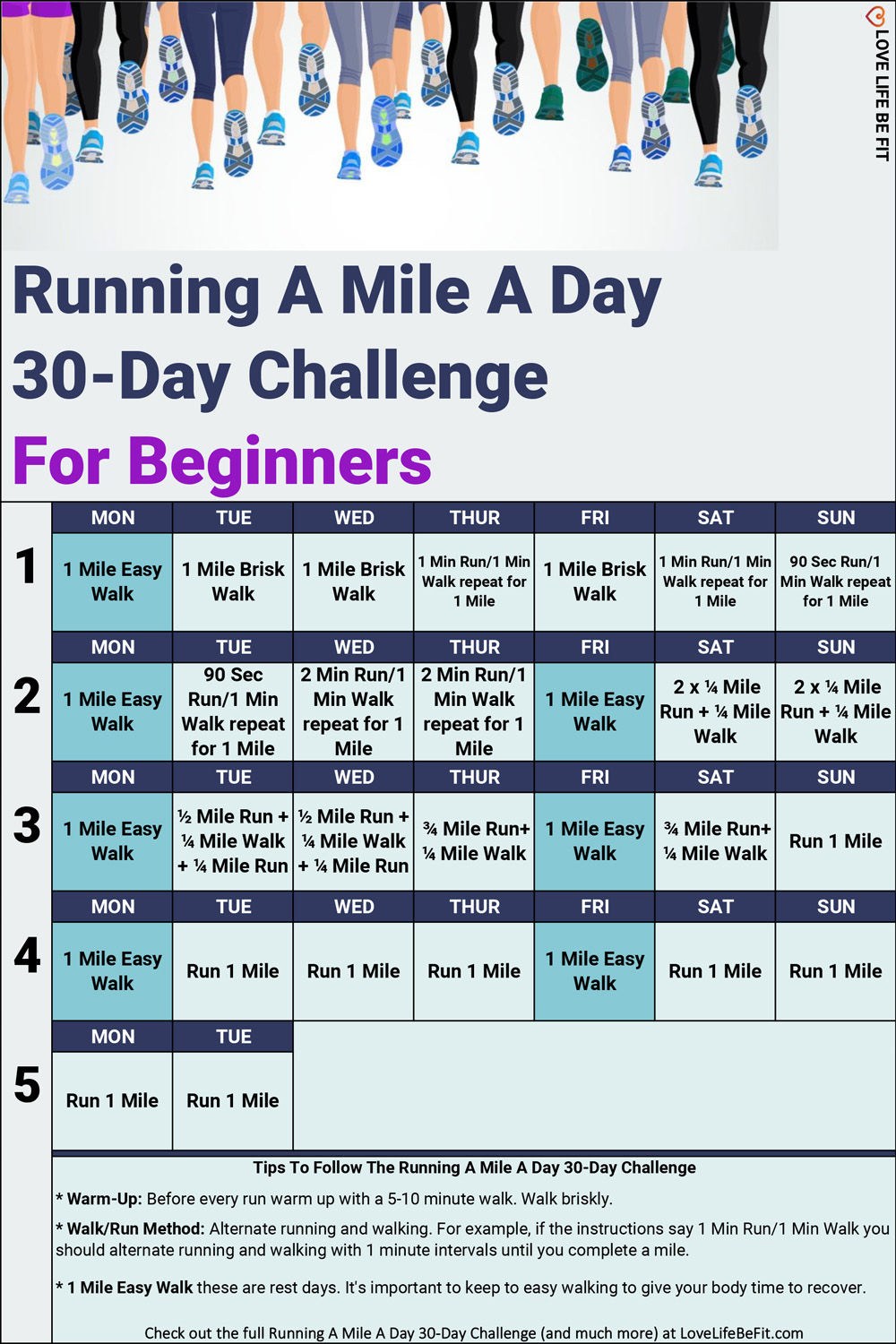
Download The FREE Running Challenge
Running A Mile A Day Benefits
A mile run every day will help you hit the Centers for Disease Control and Prevention (CDC) recommended level of 75 minutes of vigorous-intensity physical activity such as running or jogging or 150 minutes of moderate-intensity activity such as brisk walking.
Helps with mental health
Running every day is a great way to clear your head, put the worries of your day into perspective, and relieve stress. There are many mental health benefits associated with running particularly depression and anxiety disorders. This review looks in depth at the relationship between running and mental health.
Running in the morning helps to make you more alert and productive for the rest of the day. Regular exercise will help you get a good night’s sleep.
Reduces risk of certain cancers
Taking up running benefits your cardiovascular health and improves lung capacity. It also helps maintain healthy blood pressure. Regular exercise reduces the risk of certain cancers including breast cancer, colon cancer, and kidney cancer.
And so much more…
Run regularly to prevent obesity, type 2 diabetes, heart disease, improve your immune system, increase blood flow, and reduce the risk of Alzheimer’s and vascular dementia.
Find out more about the health benefits of running. You don’t need to run far to improve your cardiovascular health and access all the benefits of running. Just a one mile run a day will improve your overall health.
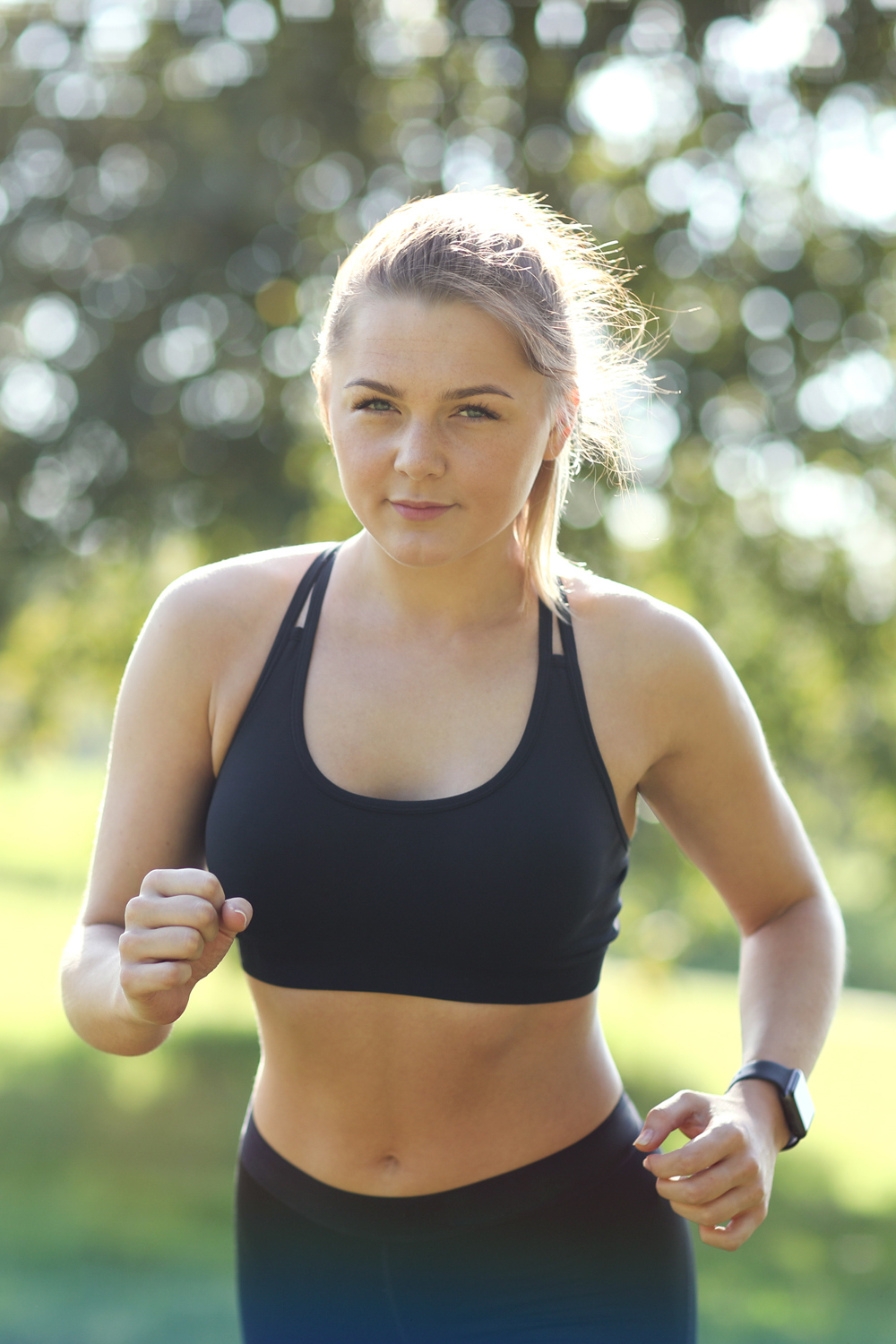
Running A Mile A Day Weight Loss
This is not a weight loss program BUT running a mile a day will help you lose weight.
The calorie burn from running a mile is about 100 calories. On its own, that’s not enough to make a big difference to your weight. It’s all too easy to replace these calories by eating just a little more.
However, if you combine your running challenge with making improvements to your diet, you can expect some big results. These are some of the reasons:
- Restrictive diets burn body fat and muscle mass as fuel. When you exercise and improve your nutrition, you’ll mainly burn just body fat.
- Running will raise your metabolism, so you burn more calories even when you are not exercising.
- Regular exercise helps to reduce cravings and makes it easier to resist unhealthy foods. You’ll be feeling good about yourself and think twice about the food you put in your body.
- As well as burning calories, running can increase muscle mass – this helps to boost calorie burn at rest.
- When you first start running a mile a day it’s going to be hard work, especially if you have a lot of weight to lose. You’ll be challenging your body and can expect to burn more than 100 calories a mile. Find out more with our calories burned running calculator.
Find out more about running for weight loss and how much should you run to lose weight.

Running A Mile A Day Transformation
If you want to change your habits, lose weight and get fitter, running just one mile a day can make a big difference.
YouTuber Samantha Costa started with the aim of running a mile a day for just one week. At the end of the week, she kept going and learned to love running. Samantha describes the experience as life-changing, lost 60 pounds in 5 months, and continued her running streak for 16 months.
Not everyone will have the same results. It all depends on your starting point, your attitude to your new fitness routine, and your relationship with food. But running a mile a day is one healthy habit that can help with losing weight.
Once you’re running regularly, most people are inspired to eat better and make healthy changes to their lifestyles. It’s a starting point for better fitness and better health.

Tips For Running A Mile A Day Challenge
Before you jump into your mile-a-day running challenge, here are a few tips:
#1 Invest in some running shoes
One of the best things about running is it’s accessible to just about everyone and you don’t need much equipment. But you do need some good running shoes. Fashion trainers won’t cut it. Take a look at our guide: Best Running Shoes For Overweight Runners
#2 Warm up properly
Don’t try and run fast straight out of the door. You always need to warm up first. We suggest 5 to 10 minutes of brisk walking before you start a running session.
#3 Forget about speed
Some people put too much pressure on themselves at the start of their running journey. How fast you run isn’t important.
The aim is to complete a mile. For the first 3 weeks, the plan includes walking breaks to ease you into running.
As a beginner runner, your pace will be slow. Some people will feel they’re barely moving. That’s okay – it’s the effort that’s important.
You will naturally start to run faster as you get fitter but for beginner runners, it’s more important to focus on running regularly and proper running form than trying to run fast.
#4 Pre-plan your route
It helps to know where you’re going to run before you set off. It can be an out-and-back route or a circular route. I used an out-and-back route when I ran 2 miles a day but sometimes a circular route helps with motivation.
#5 Schedule a regular running time
Run in the morning, during your lunch break, or after work. It doesn’t matter when. It does matter that you make time for your run.
#6 Cool-down afterwards
Walking for 5 minutes at the end of your run and some gentle post-run stretching will help your muscles recover. Without a cool-down, you’re more likely to wake up stiff and sore the next morning.
#7 Stick to the challenge
A mile a day is a manageable distance. If you’re completely sedentary with no recent exercise history it will be tough at times. But it’s still doable.
Take extra walk breaks if you really need them but remember this is a challenge. Work it!
Try and stick to the plan and complete the run sessions – it doesn’t matter how slowly you run or jog, just keep pushing.
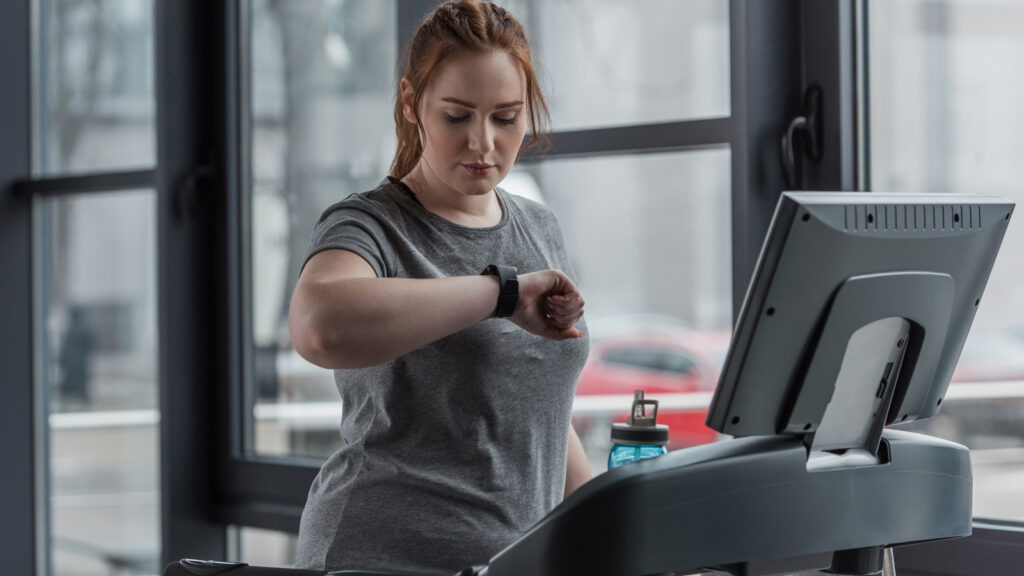
Thoughts From Love Life Be Fit
30 Day Running Challenges are a great way to improve your fitness and build healthy habits.
Running a mile a day can be life-changing. If you commit to the challenge, you’ll see results in terms of improved fitness levels, better sleep, more energy, and possibly even weight loss.
This site is full of advice and support to help you become a runner. Try some of our other beginner training plans such Couch to 5K or these fun 30-Day Challenges for fitness and motivation.
As you improve at running you can build up how far you run every day. In 3 to 6 months, you could be running 5 miles a day!
If you don’t think running is for you, try our 30 Day Walking Challenge For Beginners or our 10000 Steps A Day Challenge. Any challenge that gets you moving more will have a positive impact on your health.
